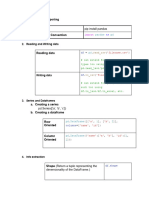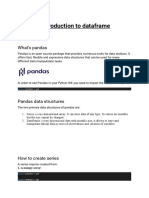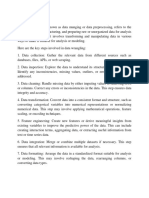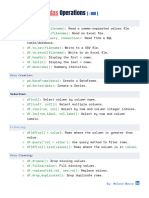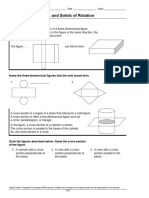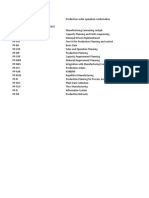0% found this document useful (0 votes)
50 views5 pagesReference Guide - Pandas Tools For Structuring A Dataset
The document provides a reference guide for common Pandas functions used to structure datasets. It lists functions for combining data frames like merge(), concat(), and join(); extracting or selecting specific columns or data types using []; filtering data using Boolean masks; sorting values with sort_values(); and slicing data frames with iloc[] and loc[]. Key takeaways are that these tools are foundational for structuring data through operations like filtering, sorting, merging, and slicing. Additional resources are provided for learning more about the functions and parameters.
Uploaded by
khederissa385Copyright
© © All Rights Reserved
We take content rights seriously. If you suspect this is your content, claim it here.
Available Formats
Download as DOCX, PDF, TXT or read online on Scribd
0% found this document useful (0 votes)
50 views5 pagesReference Guide - Pandas Tools For Structuring A Dataset
The document provides a reference guide for common Pandas functions used to structure datasets. It lists functions for combining data frames like merge(), concat(), and join(); extracting or selecting specific columns or data types using []; filtering data using Boolean masks; sorting values with sort_values(); and slicing data frames with iloc[] and loc[]. Key takeaways are that these tools are foundational for structuring data through operations like filtering, sorting, merging, and slicing. Additional resources are provided for learning more about the functions and parameters.
Uploaded by
khederissa385Copyright
© © All Rights Reserved
We take content rights seriously. If you suspect this is your content, claim it here.
Available Formats
Download as DOCX, PDF, TXT or read online on Scribd
/ 5














